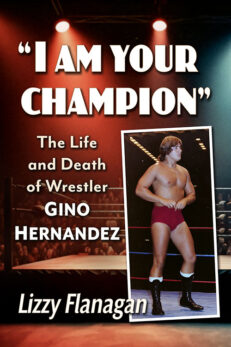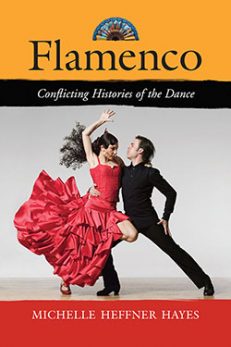Flamenco
Conflicting Histories of the Dance
$29.95
In stock
About the Book
This analytical history traces representations of flamenco dance in Spain and abroad from the twentieth century to the present, using histories, film, accounts of live performances, and practitioner interviews. Beginning with an analysis of flamenco historiography, the text examines images of the female dancer in films by Luis Buñuel, Carlos Saura, and Antonio Gades; stereotypes of flamenco bodies and Andalusian culture in Prosper Mérimée’s Carmen; and the ways in which contemporary flamenco dancers like Belén Maya and Rocío Molina negotiate the stereotype of Carmen and an idealized Spanish feminine that pervades “traditional” flamenco. Instructors considering this book for use in a course may request an examination copy here.
About the Author(s)
Bibliographic Details
Michelle Heffner Hayes
Format: softcover (6 x 9)
Pages: 212
Bibliographic Info: 28 photos, notes, bibliography, index
Copyright Date: 2009
pISBN: 978-0-7864-3923-2
eISBN: 978-1-4766-1312-3
Imprint: McFarland
Table of Contents
Acknowledgments vi
Introduction: Flamenco’s Exotic Currency 1
1. DESIRING NARRATIVES: FLAMENCO IN HISTORY AND FILM 29
Conflicting Histories 29
Origin Points 31
Romantic Excursions 38
La Edad de Oro/The Golden Age 39
Transformation Abroad and Tourism at Home 40
Purity and Preservation 41
The Ideology of Flamenco Histories 43
The Desiring Subject 45
A Choreographic In(ter)vention 48
Film Narrative as a Discourse of Desire 49
2. PURISM, TOURISM AND LOST INNOCENCE 53
Flamenco Bodies: Essence or Effect? 53
International Exposure 56
Model Exotics 57
Paradise Lost 64
The Taint of Tourism 68
3. IMAGINING ANDALUSIA 75
Divine Inspiration: Origins Reconsidered 75
Passionate Nature: The Academic Appeal of a Universal Humanity 80
Sober Clinicism: Demystifying the Other 84
(Re)discovering the Women in Cante 91
4. FATAL FILMIC FLAMENCAS 97
The Spectre of Carmen 97
That Obscure Object of Desire (1977) 98
Marked: The Character of La Novia in Blood Wedding (1981) 101
Carmen Revisited (1983) 109
Love, the Magician (1986) 119
5. REALISM REINVENTED 123
The Documentary and Nacionalflamenquismo 124
Sevillanas (1992) and Flamenco (1995) 128
Opening Credits (Sevillanas) 129
Opening Credits (Flamenco) 130
The Performances (Sevillanas) 132
The Performances (Flamenco) 134
Sevillanas Flamencas, Sevillanas Gitanas 137
Endings: Sevillanas 140
Endings: Flamenco 141
Flamenco Women (1997) 142
6. REINTERPRETING THE EXOTIC 145
Calculated Unruliness 146
Strategic Presence 157
Practiced Spontaneity 159
The Dancing Lesson (Anaheim, California, 1995) 160
The Problem of Improvisation/Giving Up the Ghost 162
Rising from the Ashes: Spain’s Position in the New World Order 165
7. “SOMOS ANTI-GUAPAS”—AGAINST BEAUTY IN CONTEMPORARY FLAMENCO 167
Belén Maya 169
Pastora Galván 173
Rocío Molina 178
Chapter Notes 187
Bibliography 193
Index 197
Book Reviews & Awards
- “An informative contribution to the growing field of flamencology. The author offers a unique approach to the field of study”—Journal of Folklore Research
- “Meticulous…a great book…the quality of the research and investigation of the subject is awesome”—Books4Spain






